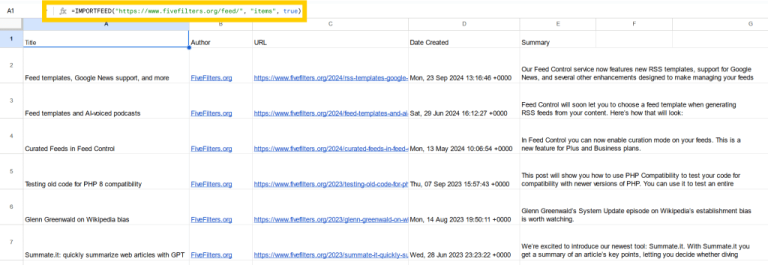
Key takeaways
The Voice over Internet Protocol (VoIP) uses the Session Initiation Protocol (SIP), a universal standard acting as a common language that different devices such as smartphones, computers, tablets, and VoIP phones use to initiate and communicate with other devices. SIP manages and oversees the online initiation, modification, and termination of voice and video session calls.
What is the VoIP protocol?
The Session Initiation Protocol (SIP) is an application layer protocol known as the standard for signaling and controlling VoIP communication sessions. The SIP became a standard by the Internet Engineering Task Force (IETF) in 1999. The Session Initiation Protocol is considered a subprotocol that enables Voice over Internet Protocol communications designed to emulate the functionality of how traditional phones operate.
The SIP is an essential protocol for VoIP phone services because it removes the need to retrain users when they move from a traditional phone to a VoIP device. The Session Initiation Protocol works with different protocols but works with each one differently.
Read more: VoIP vs. Landline: The Pros and Cons for Business
Most popular VoIP protocols?
The protocols used on an active VoIP call are SIP, Real-Time Transport Protocol (RTP), Session Description Protocol (SDP), and Medial Gateway Control Protocol (MGCP). The other relevant protocols are User Datagram Protocol (UDP), H.323, Secure RTP (SRTP), and RTP Control Protocol (RTCP).
Each protocol used in a VoIP phone communication session does the following:
Session Initiation Protocol (SIP)
Initiates the call by sending messages like call setup, ringing, and call disconnect to facilitate the call between calling participants.
Real-time Transport Protocol (RTP)
After the call is established, RTP carries the digital voice packets across the network while ensuring the timely delivery of each packet for smooth audio transmission.
Session Description Protocol (SDP)
This protocol uses a text-based format to describe multimedia session parameters and sends information about the session when multimedia data is transferred across a network.
Medial Gateway Control Protocol (MGCP)
The MGCP is a communication channel between the call control device (Call Agent) and the Media Gateway to manage the call and send commands to the gateway to control routing, codec selection, volume changes, and call termination. The call agent monitors and reports the status of the call.
User Datagram Protocol (UDP)
The UDP is responsible for rapidly transmitting voice data packets between the caller and receiver and prioritizes speed over guaranteed delivery. The UDP sends packets as quickly as possible without waiting for delivery confirmation. The UDP does not establish a dedicated connection before sending data packets, as it is primarily focused on faster transmission.
Secure RTP (SRTP)
The SRTP protects voice over IP calls to prevent eavesdropping by encrypting the RTP packets to prevent unauthorized replaying or reordering of data packets.
RTP Control Protocol (RTCP)
The RTCP gathers statistics on quality during an active VoIP call. The RTP carries the media streams, and the RTCP uses the RTC-collected data to monitor transmission statistics and quality of service (QoS).
Less common VoIP protocols
H.323
The SIP and H.323 were created to manage voice or video communication over an IP network, but the H.323 was not designed to handle instant messaging. Even though both protocols were created in the mid to late 1990s, the SIP is more advantageous because it can manage voice, video, and messaging. Additionally, the Session Initiation Protocol is a more flexible and scalable protocol that uses a modular architecture that can handle call setup and management processes more efficiently than H.323.
The H.323 is a connection-oriented protocol requiring a connection before exchanging data. In contrast, the SIP is a connectionless protocol that focuses on faster communication and does not require setup time.
XMPP and Jungle
These two protocols are primarily used for peer-to-peer (P2P) transmissions, focusing on instant messaging. Jingle improves instant messaging with VoIP and videoconferencing features.
Inter-Asterisk Exchange (IAX)
Used as a reliable option for VoIP termination for service providers using Asterisk-based solutions. Inter-Asterisk Exchange uses a single UDP port for both media traffic and signaling that reduces the need for sophisticated Network Address Translation (NAT) and firewall configurations
Skinny Client Control Protocol (SCCP)
Skinny Client Control Protocol is a Cisco-proprietary protocol that controls signaling and available features on Cisco IP phones, endpoint devices, or embedded systems.
What are the key features of VoIP protocols?
VoIP phone systems have many key features that would be an additional cost if added to a traditional phone line.
The key features of various VoIP protocols include:
- Call forwarding automatically forwards calls to one or more numbers or extensions, allowing the recipient to take calls at any location.
- Call recording records audio of a phone call or a text transcript of a call, which can happen automatically or on demand.
- Call routing answers calls automatically and distributes the calls to the correct queue, allowing a person or group to answer the call.
- Caller ID displays the calling number that a business can use to prioritize important calls.
- Call queuing prevents calls from being terminated at the busy signal or sent to voicemail.
- HD voices provide very clear audio quality.
- Auto attendant is a menu system that answers calls and routes them to the correct person or department.
- Video conferencing is a VoIP feature that allows virtual meetings using audio and video for two-way communication.
- Call screening helps a business or user decide whether to accept or reject the incoming call, and this feature uses caller ID.
- Voicemail transcription transcribed an audio voicemail and sends it to the user’s email.
- Call pulling moves a phone conversation from one device to another, allowing the salesperson or agent to be more mobile by using cellular networks when required.
- Call analytics is used to track incoming call volume, call time, hold time, and call performance, including customer behavior and agent performance.
- Auto dialers automatically dial numbers from a contact list, which allows call center agents to quickly connect with potential clients without the agent wasting time dialing numbers.
- Call monitoring is used by management to listen to or participate in a call without the customer being aware that a manager is on the call to provide guidance.
- Call notify use pre-defined criteria about an expected call and notify a user by email that the scheduled call is occurring or has occurred.





